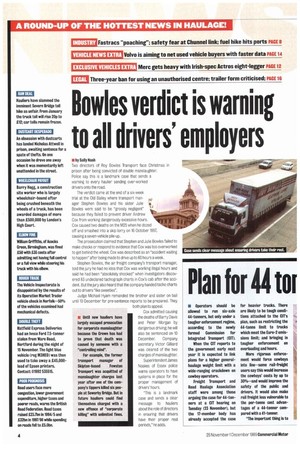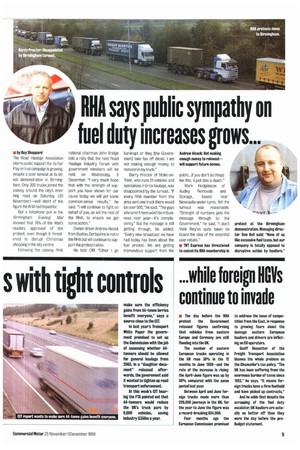Plan for 44101 s with tight controls
Page 6

Page 7

If you've noticed an error in this article please click here to report it so we can fix it.
• Operators should be allowed to run six-axle 44-tonners. but only under a tougher enforcement regime, according to the newly formed Commission for Integrated Transport (CIT).
When the CIT reports to the government early next year it is expected to link plans for a higher generalhaulage weight limit with a wide-ranging crackdown on cowboy operators.
Freight Transport and Road Haulage Association staff were among those arguing the case for 44-tonners at a CIT hearing on Tuesday (23 November), but the 17-member body has already accepted the case for heavier trucks. There are likely to be tough conditions attached to the CIT's plan, such as restricting the 44-tonne limit to trucks which meet the Euro-2 emissions limit: and bringing in tougher enforcement on overloading and hours.
More rigorous enforcement would force cowboys into line—some rail-freight users say this would increase the cowboys costs by up to 30%—and would improve the safety of the public and drivers. It would also make rail freight less vulnerable to the per-tonne cost advantages of a 44-tanner compared with a 41-tanner.
"The important thing is to make sure the efficiency gains from 44-tonne lorries benefit everyone," says a source close to the CIT.
In last year's Transport White Paper the government promised to set up the Commission with the job of assessing whether 44tanners should be allowed for general haulage from 2003. In a "daughter document" released afterwards, the government said it wanted to tighten up road transport enforcement.
At this week's CIT hearing the FTA pointed out that 44-tonners would reduce the UK's truck pare by 9,000 vehicles, saving industry £350m a year.












































































































